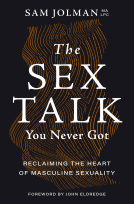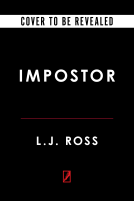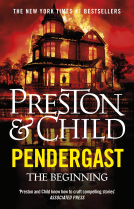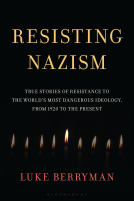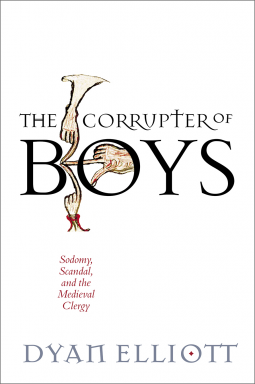
The Corrupter of Boys
Sodomy, Scandal, and the Medieval Clergy
by Dyan Elliott
This title was previously available on NetGalley and is now archived.
Send NetGalley books directly to your Kindle or Kindle app
1
To read on a Kindle or Kindle app, please add kindle@netgalley.com as an approved email address to receive files in your Amazon account. Click here for step-by-step instructions.
2
Also find your Kindle email address within your Amazon account, and enter it here.
Pub Date Nov 27 2020 | Archive Date Aug 07 2020
Talking about this book? Use #TheCorrupterofBoys #NetGalley. More hashtag tips!
Description
In the fourth century, clerics began to distinguish themselves from members of the laity by virtue of their augmented claims to holiness. Because clerical celibacy was key to this distinction, religious authorities of all stripes—patristic authors, popes, theologians, canonists, monastic founders, and commentators—became progressively sensitive to sexual scandals that involved the clergy and developed sophisticated tactics for concealing or dispelling embarrassing lapses. According to Dyan Elliott, the fear of scandal dictated certain lines of action and inaction, the consequences of which are painfully apparent today. In The Corrupter of Boys, she demonstrates how, in conjunction with the requirement of clerical celibacy, scandal-averse policies at every conceivable level of the ecclesiastical hierarchy have enabled the widespread sexual abuse of boys and male adolescents within the Church.
Elliott examines more than a millennium's worth of doctrine and practice to uncover the origins of a culture of secrecy and concealment of sin. She charts the continuities and changes, from late antiquity into the high Middle Ages, in the use of boys as sexual objects before focusing on four specific milieus in which boys and adolescents would have been especially at risk in the high and later Middle Ages: the monastery, the choir, the schools, and the episcopal court.
The Corrupter of Boys is a work of stunning breadth and discomforting resonance, as Elliott concludes that the same clerical prerogatives and privileges that were formulated in late antiquity and the medieval era—and the same strategies to cover up the abuses they enable—remain very much in place.
Dyan Elliott is the Peter B. Ritzma Professor in the Humanities and Professor of History at Northwestern University and a John Simon Guggenheim Memorial Foundation Fellow. She is author of The Bride of Christ Goes to Hell: Metaphor and Embodiment in the Lives of Pious Women, 200-1500 and Fallen Bodies: Pollution, Sexuality, and Demonology in the Middle Ages, both available from the University of Pennsylvania Press.
Advance Praise
"In my work as a court expert and consultant worldwide, I have been involved in more than one discussion with Church apologists who assert that the sexual violation of boys is a new phenomenon. Among the greatest failures of the hierarchical leadership of the Catholic Church has been the abysmal ignorance of the Church's own unrevised history, the unwillingness to entertain the validity of the events of the past when they are presented, and the inability to learn from that past. In The Corrupter of Boys, Dyan Elliott shows us the evident parallels between the medieval and modern periods. It is a remarkable and invaluable book."
—Thomas P. Doyle, J.C.D., C.A.D.C.
"When the contemporary Catholic clergy sexual abuse crisis first broke in the 1980s, church officials in the United States and Rome pointed to the immorality of secular modernity as its cause. The Corrupter of Boys exposes once and for all the moral and intellectual emptiness of this claim. Elliott's deeply learned and unflinching account of the sexual privileges accorded priests and prelates from antiquity through the later middle ages—enshrined in theology and law and protected by secrets, silence, and lies—is an essential contribution towards a new history of Catholic sexuality. It is also a major step in the dismantling of the Catholic closet."
—Robert A. Orsi, author of History and Presence
"Dyan Elliott, an indefatigable medievalist-muckraker, argues that clerical child abuse is not just a modern issue. Here laid bare is the longue durée of an ecclesiastical culture anxious above all to preserve its power and reputation, rather than to confront its moral failings. Elliott's fearless take on the clergy's romance with pedophilia is certain to inspire both passionate controversy and exciting new research."
—Barbara H. Rosenwein, Loyola University Chicago
"Dyan Elliott's bold book is unflinching in its examination of the long history of clerical pederasty and the ecclesiastical culture of silence about sexual predators. Her argument will provoke important reconsiderations of the history of sexualities, of medieval anti-clericalism, and of conceptions of childhood."
—Martha Newman, University of Texas at Austin
Available Editions
| EDITION | Other Format |
| ISBN | 9780812252521 |
| PRICE | $45.00 (USD) |
Average rating from 4 members
Featured Reviews
 Reviewer 343665
Reviewer 343665
This is an historical treatise on the use of boys as sex partners by clergy in the Catholic Church. It is ALL about the olden days and covers subjects such as the church's deliberation over whether priests should marry, and if not, what to do to sublimate the sexual life. It is well written and has thorough references. It is all about the very long history of these practices and does not address the recent 20th - 21st century crises.
One third of the book is the very long reference section. I'm not sure a reader would be thrilled with that.
 Jane B, Librarian
Jane B, Librarian
This is a difficult topic to read and discuss. The Catholic Church has been complicit on covering up the misbehavior of priests for far too long. The author pulls back the curtain on misdeeds going back centuries. Can the church make reparations for the harm it’s caused? Probably not. Can it move forward and take responsibility for the mismanagement of its failed clergy? It must if the church is to survive.
The world has been scandalized throughout the 21st century by the revelations regarding persistent clerical sexual abuse in the Roman Catholic Church along with all of its actions attempting to cover it up. Many try to claim the problem is a modern phenomenon; many more wonder how the organization could do such things and make such decisions. This book thoroughly demonstrates the long-running nature of the difficulty of clerical sexual abuse and all of the late antique and medieval decisions which have led to the current institutional crisis.
The author covers the period from late antiquity through the medieval period and relies on primary source data to explore how clerical sexual abuse became so prevalent and how it was so often covered up. The reasoning for clerical celibacy is explored: the defilement and denigration of sex and the exaltation of the virtue of celibacy. The author also explores attitudes toward pederasty in late antiquity and shows convincingly how the practice was not frowned upon as much as might be imagined. The ability to receive and maintain sinners in the church in the Augustine vs. Donatists disputation is explored, and its unfortunate consequences of emphasizing the sanctity of the position over the quality of the character. The author speaks of the authors of canon law and their concern about scandal - the desire to not cause greater difficulty by having iniquity exposed and thus cause other souls to be scandalized, and thus the desire for discretion. The final piece involves priests getting absolution from Confession and the inability of the Confessor to expose any sin confessed in that context.
All of this comes together and is shown to cause all kinds of issues in the medieval church: canon law very strongly emphasized and focused on the scandal of clerical concubinage since such often led to pregnancies and thus public scandal. So much emphasis was made on keeping women away from the clerics that what clerics did among one another, and with younger boys in their care, is comparatively passed over with lesser concern. A few voices, like Peter Damian, did attack and go after the sodomitical practices among the clerics; the author does well at showing how many authors projected sodomitical concerns on the secular rulers. On the whole, however, the goal was to keep it as silent as possible, and to move people around if they started causing problems. The goal was to eliminate causes of scandal; charges of sodomy tended to arise only to help reinforce other charges and to indict someone in trouble for other reasons, and rarely was addressed in its own right.
The author does the best job possible in light of how little evidence remains, and how much of the evidence that remains relies on obfuscation and a desire to not be explicit in order to, again, not cause scandal. That kind of "discretion" allows others to cast aspersions and doubt on what is being discussed.
But this work does an extremely good job of showing that the current challenges of the Roman Catholic Church are not new, and the institutional failure all but guaranteed based upon all of these ancient and medieval precedents in how the church thinks it should run itself.
The sharpest possible indictment of the Roman Catholic Church's historical impetus to preserve its own reputation over the well being of those victimized by its agents, and the best possible argument for releasing clerics from celibacy.
Everyone should read this book. In a careful, well constructed and well written way, the author shines a light on what has become only too clear in recent years - the systemic abuse of children perpetuated by those who were supposed to protect them. These are not new issues and the author insists that we acknowledge this fact. A very important reflection on institutionalised violence.
Readers who liked this book also liked:
Alan R. Warren
Biographies & Memoirs, History, True Crime
